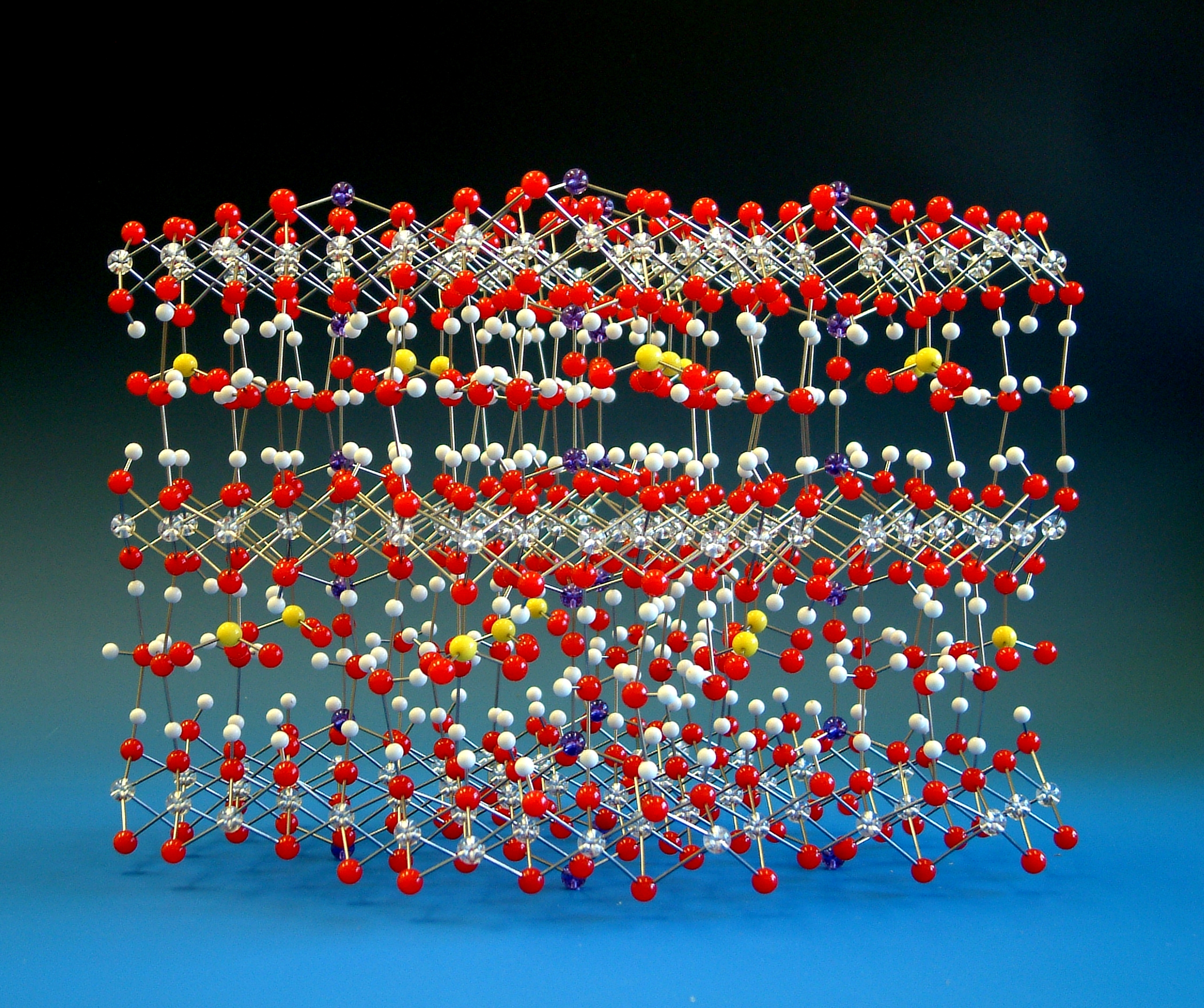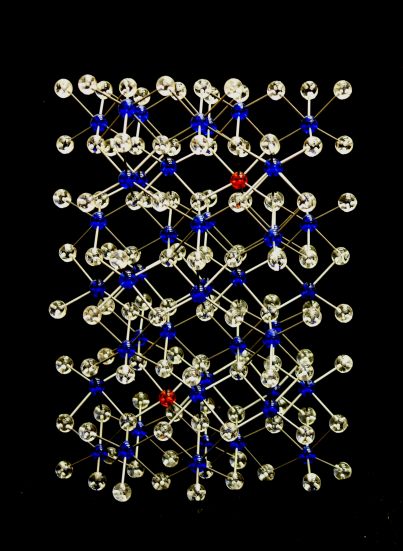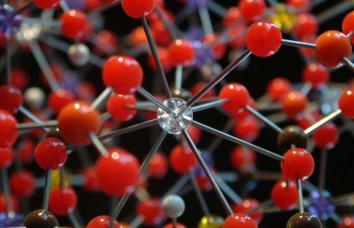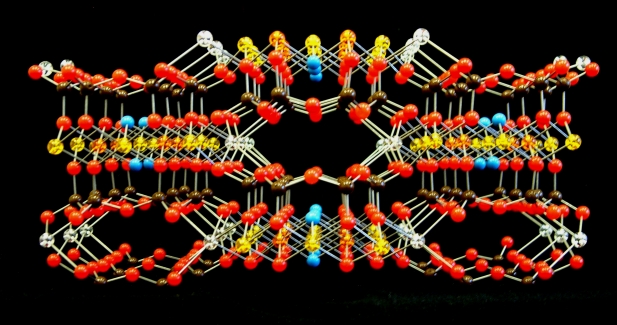
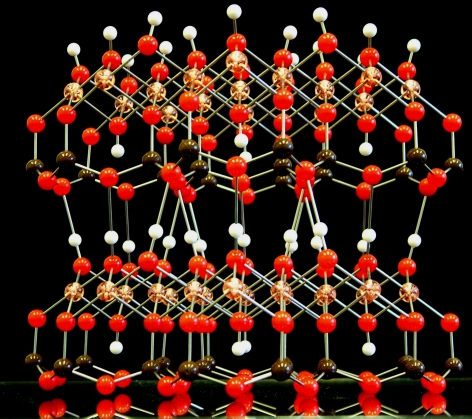



Minerals are a fascinating and varied group of materials; the visible forms that mineral crystals adopt result directly from their internal crystal structures, which are almost as rich and varied as the minerals themselves. Over the years, our models have been used to illustrated the structures of hundreds of these minerals, with more being added ever year.
Our mineral structures are almost always made at a scale of 1cm=1Å, which results in models that are large enough to allow appreciation of the structure and symmetry of the mineral, but small enough to fit into an average-sized display case, or on an office desk. The models are normally sized so that they extend a minimum of 1.3 unt cell lengths along each axis, in order that every atom type is shown in its complete coordination sphere at least once in the model, although they can be made as large or small as you wish. The fact that the same, uniform scale is used throughout our standard models is central to our models, and means that structures can be directly compared. So, for example, the relative pore sizes in zeolites, or clay minerals can be clearly and directly illustrated to visitors. Examples of these mineral structure models, geological models and crystal structures can be seen here.
As with all of our other models, you are not restricted to the items in our catalogue. We can produce any structure, to any scale, according to your requirements. We can make extra large models that are absolutely stunning and eye-catching, we can include highlighting of unit cells and incorporate lattice planes, to assist the educational aspects of your models. We can display the models on bases, and include illumination to really draw people's attention. And if you need to illustrate the replacement of ions in the structure, why not consider our options for that?
If you want models to fill a really big space, why not consider our large molecular models or our giant molecular models?
So, when you want to display a model of a mineral structure for whatever reason - whether you need help to explain a structure to students, you are studying a known mineral, or maybe even want to celebrate discovered a new one, why not use our accurate and high quality models to help you?
